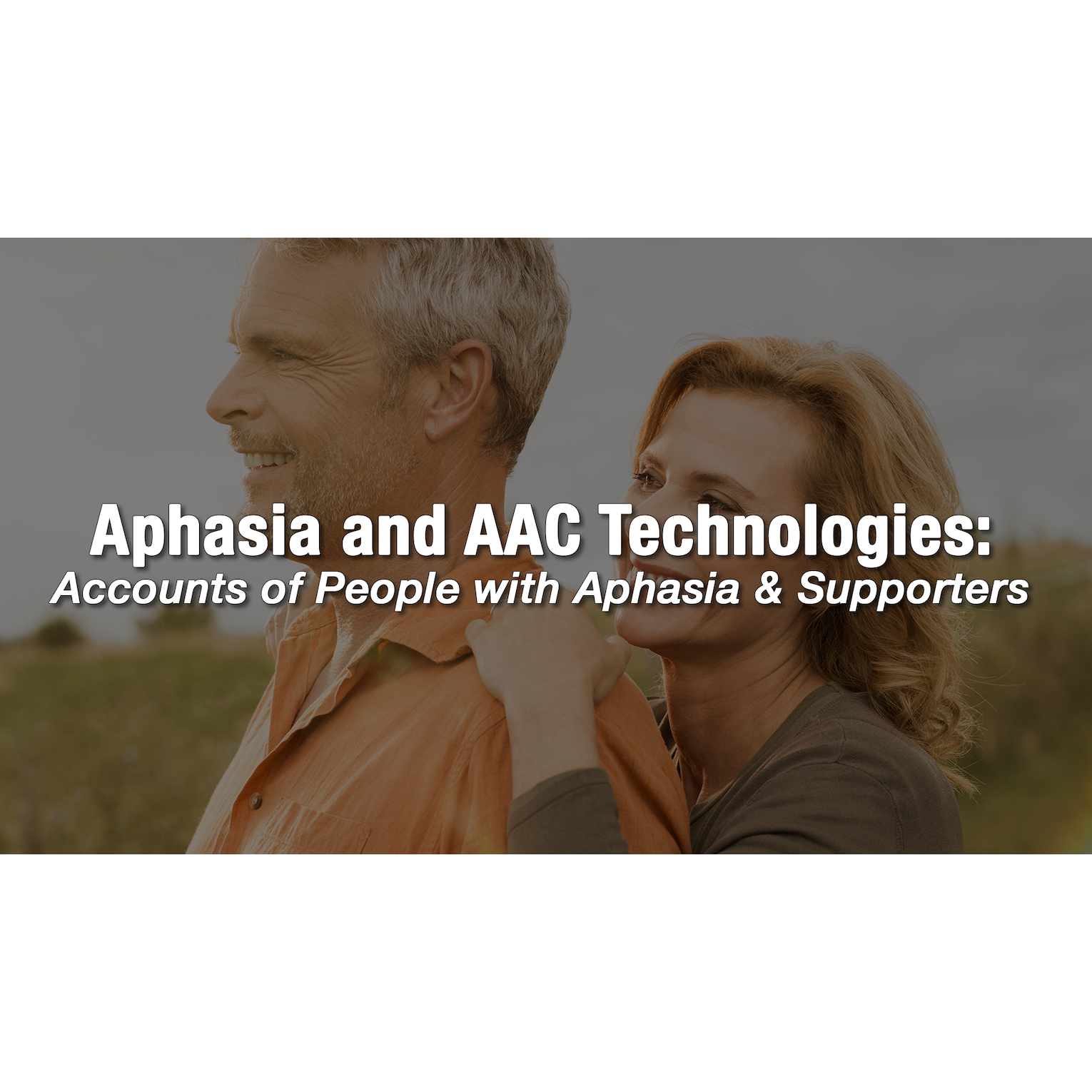Catalog

This course has been developed for delivery to speech-language pathologists. It is registered with ASHA for 0.1 CEU.
Course Description
An introductory section discusses how AAC technologies for persons with aphasia (PWA) includes both low-technology approaches that go back decades, alongside high-technology offerings that are of more recent introduction, starting with C-ViC, the earliest clinically validated AAC software for PWA, which we show running on a Mac Classic. In the 30 years since, advanced AAC devices have grown remarkably in both technological capabilities and rehabilitation effectiveness. Firsthand, experienced-based testimony about AAC technology uses and benefits draw first on accounts of persons with aphasia who themselves are users of these technologies, for their various purposes. We hear from several individuals who discuss their stroke-recovery histories, challenges, personal accomplishments, and the unique perspectives of PWA.
Introductory level; Professional
Disclaimer: This course is focused on Lingraphica high-tech AAC devices. There will be limited information about other device manufacturers
ASHA CE Provider approval and use of the Brand Block does not imply endorsement of course content, specific products, or clinical procedures. LingraphiCare America is approved by the Continuing Education Board of the American Speech-Language-Hearing Association (ASHA) to provide continuing education activities in speech-language pathology and audiology.
About this item
This course is valid from December 1, 2022 to December 31, 2022.
This course has been developed for delivery to speech-language pathologists. It is registered with ASHA for 0.1 CEU.
Course Description
An introductory section discusses how AAC technologies for persons with aphasia (PWA) includes both low-technology approaches that go back decades, alongside high-technology offerings that are of more recent introduction, starting with C-ViC, the earliest clinically validated AAC software for PWA, which we show running on a Mac Classic. In the 30 years since, advanced AAC devices have grown remarkably in both technological capabilities and rehabilitation effectiveness. Firsthand, experienced-based testimony about AAC technology uses and benefits draw first on accounts of persons with aphasia who themselves are users of these technologies, for their various purposes. We hear from several individuals who discuss their stroke-recovery histories, challenges, personal accomplishments, and the unique perspectives of PWA.
Introductory level; Professional
Disclaimer: This course is focused on Lingraphica high-tech AAC devices. There will be limited information about other device manufacturers
ASHA CE Provider approval and use of the Brand Block does not imply endorsement of course content, specific products, or clinical procedures. LingraphiCare America is approved by the Continuing Education Board of the American Speech-Language-Hearing Association (ASHA) to provide continuing education activities in speech-language pathology and audiology.
Course/Activity Information
Learning Objectives
After completing this course, participants will be able to:
- Describe medical service delivery perspectives on aphasia rehab
- Discuss complementary perspectives of PWA on aphasia rehab
- Describe AAC technology uses (prosthetic, orthotic, therapeutic)
- Describe the spectrum of aphasia rehab outcomes with AAC use
- Describe the benefits of AAC in lives of PWA and other care partners
Course Completion Requirements
- Attendance and/or Completion of Online Lecture
- Completion of Learning Assessment with a minimum score of 70%
- Completion of an Activity Evaluation
Instructional Personnel
Richard Steele, PhD
Richard Steele has been Chief Scientist at Lingraphica since its founding in 1990. Earlier at
the Palo Alto VA Rehabilitation R&D Center, he was Principal Investigator on the C-ViC project for computers in aphasia rehabilitation. He has published articles in the field in
Neuropsychologica, Aphasiology, Brain and Language, Stroke, and elsewhere. He holds a BS degree in physics from Stanford University, and an MA and PhD degrees in Slavic languages and linguistics from Harvard University.
Relevant Financial Relationships: Dr. Steele is an employee at Lingraphicare America, Inc. and holds several patents related to the Lingraphica software.
Relevant Non-Financial Relationships: No relevant non-financial relationships exist.
We are here to help. Please contact us for learning accommodations or your accessibility needs:
continuinged@lingraphica.com
Other information
- Training Hours: 1.00
.png)
.png)


